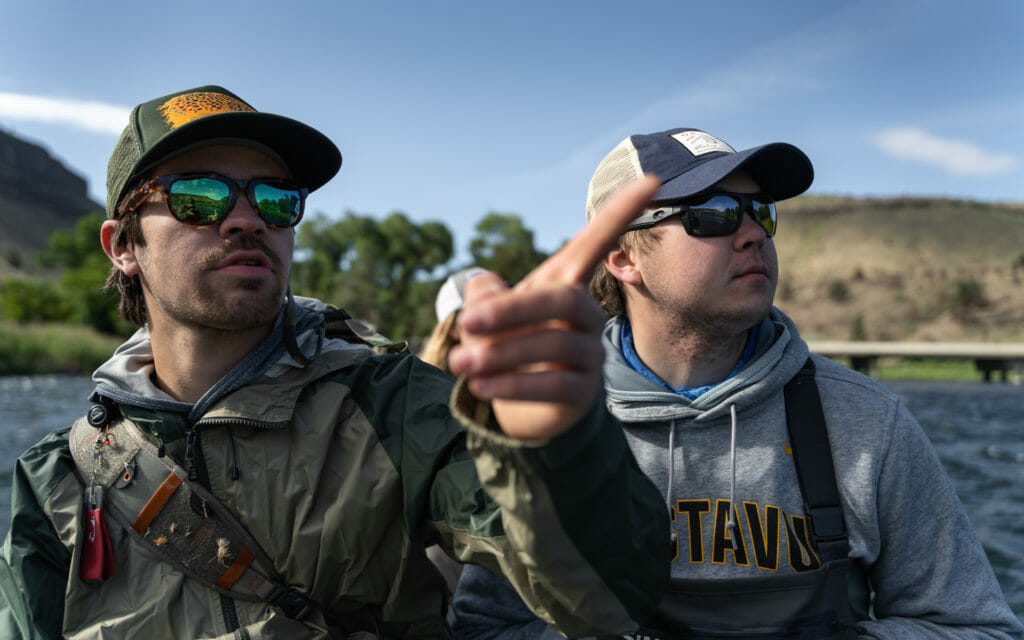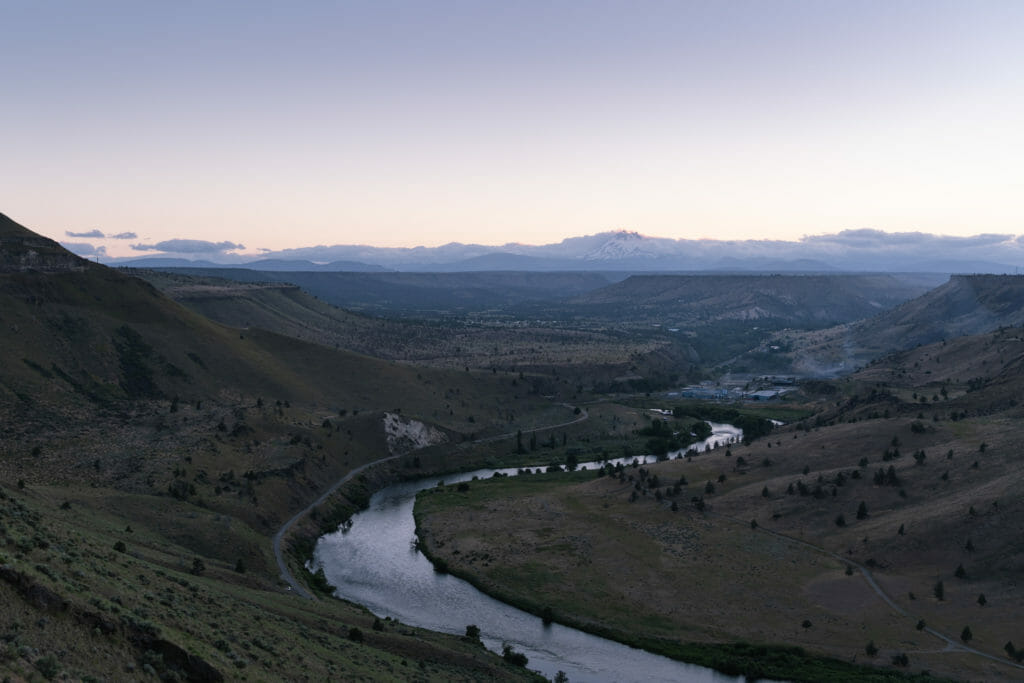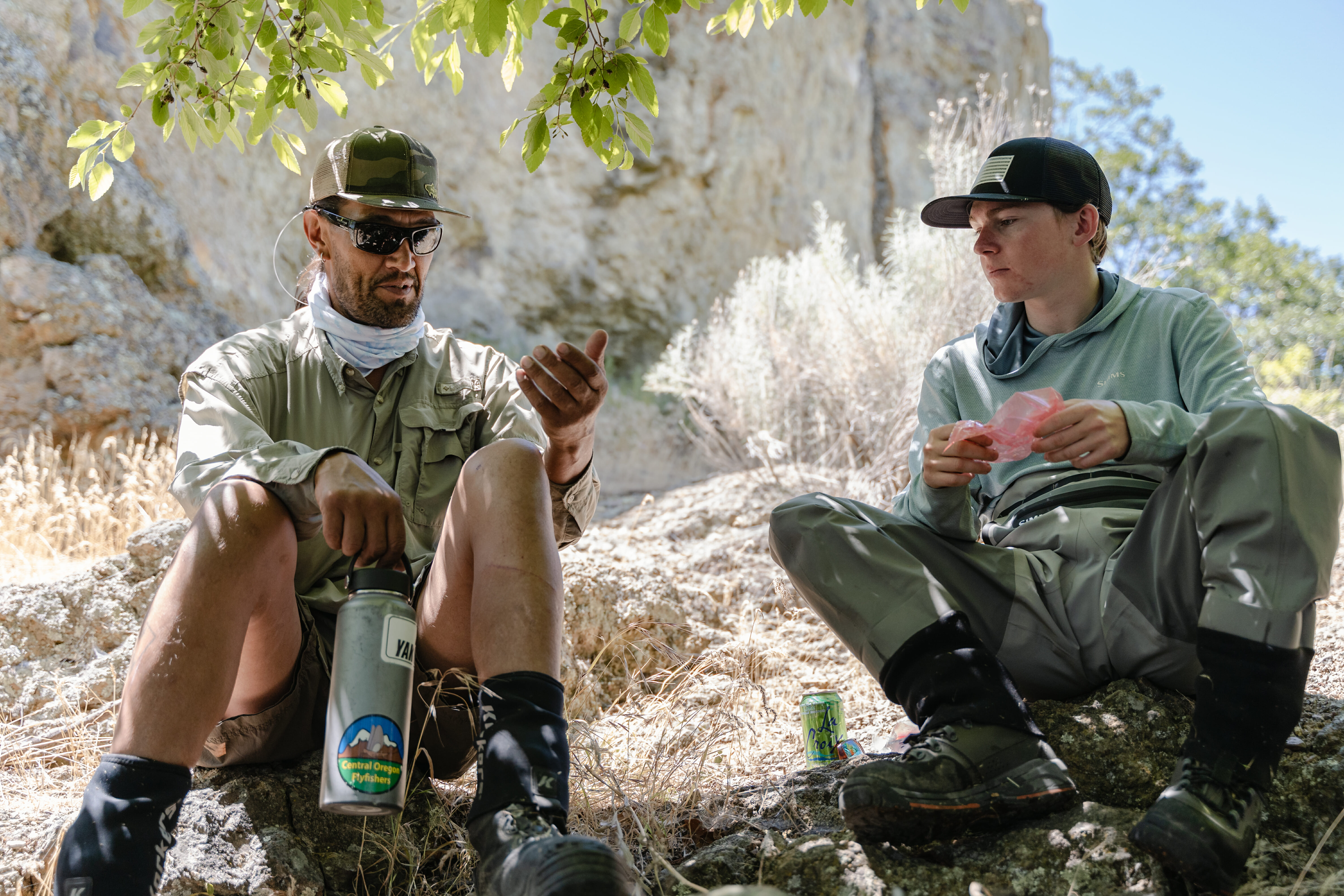Editor’s note: TU sent a handful of college students to the Pacific Northwest for this year’s TU Costa 5 Rivers Odyssey to study and fish in the Columbia River basin.
Oregon’s Deschutes river has long been known as one of the West’s most legendary watersheds. Known for its prolific hatches and dry fly fishing, specifically the salmon fly hatch, the Deschutes holds a special place in many angler’s hearts.
Yet in 2019, the river is facing more challenges than ever. While in the lower Deschutes area, we had an opportunity to meet with many different longtime locals, who have seen the changes in the river with their own eyes. These included Elke and Alysia Littleleaf, who gave us a native perspective, and Jodi Wilmouth and John and Amy Hazel who showed us the BLM side. Together, they identified changing hatches, algae growth, rising temperatures and decreasing salmon and steelhead runs as a few of the primary problems that the lower Deschutes is struggling with
Before discussing the problems with the Deschutes, it is important to understand how the river works. Above Lake Billy Chinook, which marks the start of the lower part of the river, three rivers converge: the upper Deschutes, the Crooked, and the Metolius.
The Metolius is the coldest of these three, and thus its water sat on the bottom of the reservoir. Historically, the Pelton Dam used bottom draw to supply the lower river, which was solely the ultra cold water of the Metolius. In 2010, the dam constructed a cooling tower that came at a price of more than $100 million. Since 2010 this tower has been used to capture salmon and steelhead smolt migrating downstream in an attempt to increase efficiency. In order to make this work, the tower takes a blend of warmer surface water and the cooler bottom water that was originally used. This tower has become a hot topic of debate and is considered by many to be the root of many of the current problems surrounding the lower Deschutes.

As anglers, the first thing that often catches our attention is a change in fish. Over the past couple of years, lower Deschutes anglers and guides have been noticing a steady decline in the returns of salmon and steelhead as well as the introduction of new species into the lowest reaches of the river.
In reality, this is a result of the larger problem: increasing water temperatures. As salmon and steelhead migrate up the Columbia, it is vital that they have smaller, colder rivers that they can rest in along the way. These are known as cold water refuges. Historically, the cold water of the Deschutes has provided one of these vital stopping points for fish continuing farther upriver. Now with the warmer, blended water that flows down the lower river as a result of the tower, the lower Deschutes is as warm and occasionally even warmer than the Columbia. This makes it less attractive for salmon and steelhead and even has resulted in the proliferation of invasive species such as bass and walleye in the lower reaches of the river which outcompete and eat the native fish.

These rising water temperatures in combination with changes in the river’s acidic balance have resulted in significant toxic algae blooms and algae growth on the streambed. This algae starves the water and fish of oxygen, is dangerous if consumed by humans and makes the streambed a slippery and dangerous surface to wade.
These changes have also caused shifts in the hatches that the Deschutes was known for. Famed hatches such as the March Brown have now all but disappeared.
The amount of problems that the lower Deschutes is facing is overwhelming, but at the same time, the river is not too far gone. The solution being proposed by many is to simply return to bottom draw from the Pelton Dam. This would restore colder flows, and hopefully return the river to its historic status as one of the greatest dry fly fisheries in the West.


